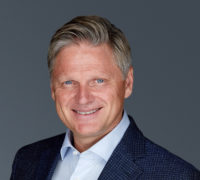- They don’t try to create sustainability goals at odds with the existing organizational culture
The best firms’ sustainability strategies are aligned with their most successful existing values. A case in point: Neste’s sustainability strategy is bottom up because the existing culture values decentralization and putting things in clusters.
If your organization’s culture is to be bold, then disrupt yourself with sustainability; if it is to be very fact-based then take that line with sustainability too.
There’s a huge difference between this approach and getting bogged down with goals to, for instance, having minimal footprint. Otherwise seen, it’s about aligning with the biggest force and maximizing the positives, as opposed to minimizing the negatives.
- They have key people on board who make it happen
This is all about choosing people – let’s call them “change agents” – who are not just thinkers or even dreamers, but have an operational mindset and are willing to be champions of sustainability.
Firms such as L’Oréal know that they need people who are knowledgeable about the company operations leading their sustainability efforts. In particular, two women had a great influence at L’Oréal in this ambit and one was brought into the company while the other was an insider. So there’s no hard and fast rule there.
- They change a few key systems to facilitate change
Attention needs to be paid to the processes and systems required to make things happen, and to have a ripple – or trickle – effect across the company.
There’s no one-size-fits all. Schneider Electric created a three-year Schneider Sustainability Impact (SSI) Index with quarterly reporting and external audits. L’Oréal became highly active in sustainability when sustainability targets were included in the bonus of top executives.
Questions should be asked across departments such as: How can we align the work of sustainability with the ordinary processes of the company? But remember that process alone will not suffice: it’s the sum of the whole range of actions taken that will see change.






